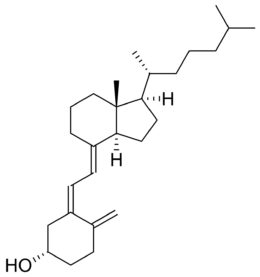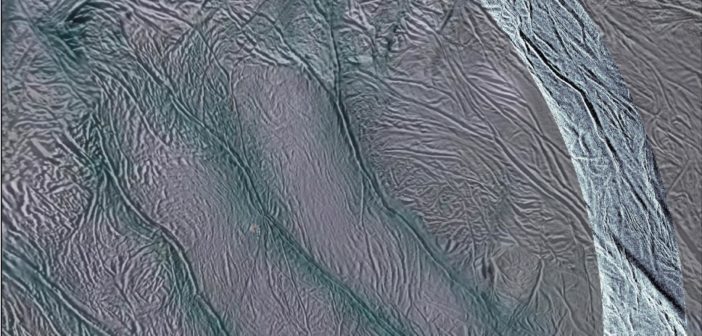The icy moons of the outer solar system are a promising place to look for life beyond Earth, and a new research article shows that we already have the tools to start our search.
Biosignature Possibilities

An image of Enceladus’s water plumes taken by Cassini. The small moon has more than a hundred such geysers. [NASA/JPL/Space Science Institute]
If life is present in the oceans of Enceladus or other icy moons in the solar system, it’s possible that plumes could deposit life-signaling molecules — biosignatures — on the surfaces of these worlds. A recent publication tests our ability to detect a certain class of biosignature compounds: lipids.

The chemical structure of a lipid called cholecalciferol. Cholecalciferol is better known as vitamin D. [Wikipedia user Calvero; Public Domain]
Measuring Samples with Mass Spectrometry
Though the term lipids might not be familiar, the molecules themselves likely are: lipids include fats, waxes, and certain vitamins. Lipids are also important components of cell membranes, making them essential to all life on Earth. Their size and complexity mean they’re unlikely to form through simple chemistry, making them potential biosignatures. But how would we detect these molecules on another world?
Rather than attempt to detect these molecules from afar, we’ll likely need to sample them directly by sending an instrument down to the surface of the planet or moon we want to study. In a recent publication, a team led by Nikita Boeren (University of Bern, Switzerland) tested the abilities of a candidate lipid-detecting spectrometer called the ORganics Information Gathering INstrument (ORIGIN).
ORIGIN is a laser desorption ion mass spectrometer, a type of instrument that uses a pulse of laser light to remove (desorb) molecules from a surface and ionize them. These electrically charged molecules are then channeled toward a detector by electric and magnetic fields, and the time that each molecule takes to reach the detector is related to the ratio of the molecule’s mass to its electrical charge. Using the mass-to-charge ratio of the molecule and any fragments it might have split into, researchers can determine which molecules were present in the sample.
Looking for Lipids
Boeren and collaborators tested ORIGIN’s ability to detect pure samples of six varieties of lipids, as well as combinations of those same lipids with other organic molecules: amino acids (compounds often referred to as “the building blocks of life”) and polycyclic aromatic hydrocarbons (molecules containing rings of carbon atoms).

Mass spectra for a mixture of six lipids (top), four lipids mixed with two amino acids (middle), and four lipids mixed with two polycyclic aromatic hydrocarbons (bottom). Click to enlarge. [Boeren et al. 2022]
Citation
“Detecting Lipids on Planetary Surfaces with Laser Desorption Ionization Mass Spectrometry,” Nikita J. Boeren et al 2022 Planet. Sci. J. 3 241. doi:10.3847/PSJ/ac94bf

